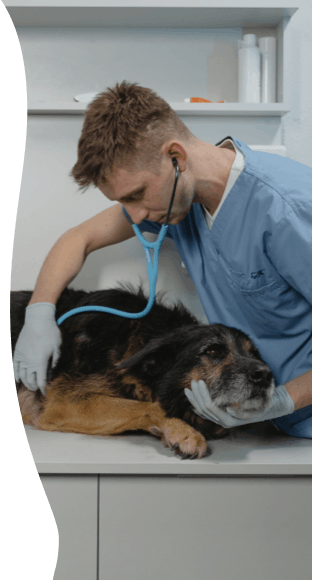Introduction
At 11 years old, your beloved pet is enjoying the later years of life. Even though they have changed from a spry pup to a more dignified dog, your pooch still has the same woofderful personality and loving heart. They may not be able to do the things they used to, like hike for miles, swim in a mountain lake, or play tug of war for hours. So take time to discover what new activity makes your dog’s tail wag. A stroll around the block. A ride in the car. Or just hanging out on the front porch. Here is some pawsome infurmation about your senior canine companion.
Growth and Development
As they age, your furry BFF may lose their hearing. Since your pooch cannot let you know their hearing is fading (wouldn’t that be nice?), pet parents often aren’t aware until their dog has a dramatic reduction in their ability to hear. You may notice that they are slow to respond to commands, or maybe they don’t come when called. Or maybe you continually catch them off guard when you approach them from behind. These are all signs your pal doesn’t hear as well as they used to. The good news is dogs with hearing loss can still feel vibrations. Try clapping your hands to get their attention, or stomping on the floor. You can also fall back on hand signals (this is an added benefit of using hand signals along with command words when training). Even though they can’t hear your words, they can still feel your love. So give your pal some extra hugs and kisses!
Health
After 11 years of exploring, dashing around, playing, and just being a dog, your pal’s body is bound to have some natural wear and tear. One area this can manifest is their back. Older dogs, especially those with long bodies like Dachshunds, may show symptoms of conditions such as Intervertebral Disc Disease around this age. When this happens, the intervertebral discs of your dog’s spinal cord are weakened as the vertebrae lose their support, the spinal cord compresses, and your pooch may experience pain. Early detection is key. If you notice that your dog is lethargic, that they avoid stairs, climbing, or running, or yelp when picked up, it’s time to see the vet. Chances are your pal will need to take medication like anti-inflammatories and muscle relaxants. Surgical options are also available. And if your pooch has an acute case, their activity may be limited.
Training
Even though your dog still knows the tricks and commands they’ve learned over the years, they may be a little slower in the execution. They can still ‘sit’ and ‘lay down,’ it just takes longer to get there. If your four legged BFF is slow to respond, they may even be hard of hearing. But if your pal is up to it, run through their tricks. Recalling the commands stimulates their mind, and the movement is always good for their body.

Food with Joint Supplements
Kibble with added Glucosamine and Chondroitin can help dogs with joint problems.

Plenty of Toys
Even dogs in their golden years love play time!

Lounging and Napping
Older dogs love catching some zzzz's!



